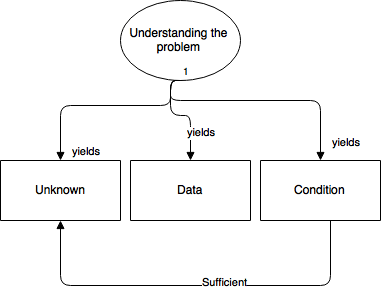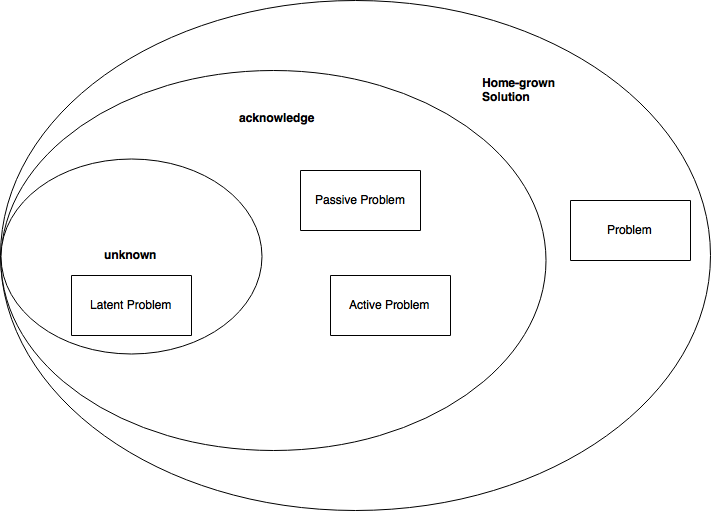 Problem, What Problem? Why is it happening? To propose a solution the problem is the key component. Often entrepreneurs, software engineers, designers forget to trace back this valuable asset to guide the development of the design. The problem study is the “missing part” and is what this article is about. As it is a continuous format, come back in other moments for a fresh look.
Problem, What Problem? Why is it happening? To propose a solution the problem is the key component. Often entrepreneurs, software engineers, designers forget to trace back this valuable asset to guide the development of the design. The problem study is the “missing part” and is what this article is about. As it is a continuous format, come back in other moments for a fresh look.
From math point of view…
The verbal statement of the problem must be understood. [2](Polya 1957).
I found this excellent reference about “how to solve a problem” from George Polya. Polya was Emeritus professor of Stanford and construct studies in mathematics such number theory and mathematical analysis. In these series of work on “how to solve a problem” he developed a framework or guide with four steps which is interesting for us here.
- Understand the problem.
- Devising a Plan.
- Carrying out the plan.
- Looking back.
Poly bring four steps which includes the thoughts regarding the solution (or design). But I will state only the initial part of which is understanding the problem.

Polya proposes that the process of understanding the problem generates questions related to: What is unknown? What is the data and conditions? Is the condition sufficient to understand unknown? Those questions are a good start point to dive into customer problems with a thoughtful approach. I will continue here…
In contrast of math the Startup Management think problem as a pure customer landscape, have a look what I compile.
From the entrepreneurship or VC point of view…
For Blank and Dorf(2012) is their Startup Owner’s Manual[1] mention the problem study as part of the customer segments of their startup framework. For the authors the problems are latent problems, passive problems, active problems and vision problems(or a problem with home-grown solution).

The point of view here is related to the knowledge about the problem which gravitates in unknown, know and the solution. the difference between passive and active is that passive problems the customer aren’t motivated to act on it, different from active which the customer are searching for a solution but not found it yet.
Let’s discuss software engineering in the next change here…
References:
[2] Polya, 1957. “How to Solve lt.” Princeton University (1957). But you can find the latest version here: Polya, George. How to Solve It: A New Aspect of Mathematical Method: A New Aspect of Mathematical Method. Princeton university press, 2014.